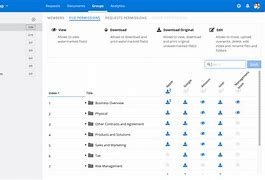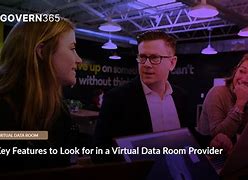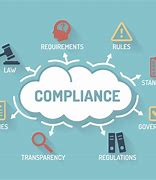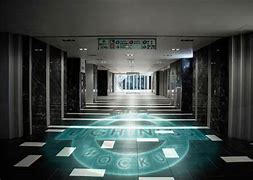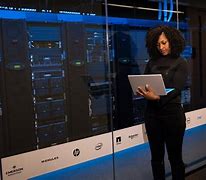
- 5 Myths About Virtual Data Rooms You Shouldn't Believe
- What are Virtual Data Rooms?
- What are Virtual Data Rooms Used For?
- Virtual Data Rooms: Security and Collaboration
- Myth 1: Virtual Data Rooms are Only for Large Corporations
- Myth 2: Virtual Data Rooms are Difficult to Use
- Myth 3: Virtual Data Rooms are Insecure
- Myth 4: Virtual Data Rooms are Expensive
- Myth 5: Virtual Data Rooms are Only for Due Diligence
- benefits of Using a Virtual Data Room
- Choosing the Right Virtual Data Room offerr
- Conclusion: Embrace the benefits of Virtual Data Rooms

Virtual data rooms (VDRs) have become increasingly popular in recent years, especially for complex transactions like mergers & acquisitions, due diligence, and fundraising. While VDRs offer many advantages, they’ve also become surrounded by a lot of myths. These misconceptions can prevent businesses from fully realizing the benefits that VDRs can bring.
In this article, we’ll debunk five of the most common myths about VDRs. These myths often center around issues like cost, security, ease of use, and accessibility. By understanding the truth about VDRs, you can make informed decisions and choose the right solution for your needs.
VDRs can help you streamline your transactions and manage sensitive information with greater security and efficiency. Don’t let these myths hold you back. By learning more about the reality of VDRs, you can discover a world of possibilities. Get ready to ditch the outdated ideas about VDRs and uncover their true power.
5 Myths About Virtual Data Rooms You Shouldn't Believe
Virtual data rooms (VDRs) have become an integral part of modern business operations, particularly in industries like finance, law, and healthcare. These secure, cloud-based platforms streamline document sharing, collaboration, and management, providing a centralized hub for sensitive information. Despite their numerous benefits, many misideaions surround VDRs, hindering their adoption by businesses of all sizes. Let’s debunk these myths and explore the true potential of virtual data rooms.
What are Virtual Data Rooms?
Virtual data rooms are secure online platforms that allow users to securely share, manage, and track sensitive documents. They act as a centralized repository for all critical information, offering attributes like document version control, access control, and detailed audit trails. VDRs are often used in situations where secure and controlled access to information is paramount.
What are Virtual Data Rooms Used For?
VDRs are versatile tools with applications across various business processes. Some of the most common use cases include:
- Due Diligence: During mergers and acquisitions (M&A), VDRs facilitate secure document sharing between buyers and sellers. This ensures efficient data transfer and reduces the risk of information leaks.
- Legal Proceedings: Law firms use VDRs to securely store and share sensitive legal documents with clients and opposing counsel.
- Project Management: VDRs can be utilized to manage large-scale projects, allowing team members to collaborate on documents, track progress, and share updates efficiently.
- Intellectual Property Management: Businesses can use VDRs to manage and protect their intellectual property, ensuring secure access to confidential data and controlled distribution of sensitive information.
Virtual Data Rooms: Security and Collaboration
At their core, virtual data rooms are designed to enhance security and collaboration. They offer advanced attributes that safeguard sensitive data while promoting efficient teamwork.
Security attributes:
- Data Encryption: VDRs use robust encryption algorithms to protect data both at rest and in transit, ensuring that only authorized individuals can access the information.
- Access Control and User Permissions: VDR offerrs offer granular access control mechanisms, allowing administrators to define specific user functions and permissions. This ensures that only authorized individuals can view, edit, or download specific documents.
- Audit Trails: VDRs maintain detailed logs of all user activities, providing a clear record of who accessed what information and when. This helps determine any unauthorized access attempts and strengthens accountability.
Collaboration attributes:
- Real-time Collaboration: VDRs allow multiple users to simultaneously access and edit documents, promoting efficient teamwork and reducing communication bottlenecks.
- Document Version Control: VDRs automatically track changes to documents, ensuring that everyone is working with the latest version. This eliminates confusion and ensures that all team members are on the same page.
- Secure Communication: VDRs offer secure messaging channels, allowing users to communicate privately and securely within the platform, ensuring that confidential information is protected.
Myth 1: Virtual Data Rooms are Only for Large Corporations
This is a common misideaion that often prevents small and medium-sized businesses (SMBs) from reaping the benefits of VDRs. The truth is, virtual data rooms are accessible and valuable for businesses of all sizes.
Small businesses can use virtual data rooms.
VDRs are no longer exclusive to large enterprises. Numerous offerrs offer flexible plans and affordable pricing options that cater to the needs of SMBs.
Cost-effective option for smaller businesses.
Compared to traditional methods of document sharing, like physical storage or email attachments, VDRs offer a cost-effective solution. They eliminate the need for physical space, reduce administrative overhead, and minimize the risk of data breaches.
Myth 2: Virtual Data Rooms are Difficult to Use
Another misideaion is that VDRs are complex and require extensive technical expertise. However, most modern VDRs boast intuitive interfaces and user-friendly attributes.
User-friendly interface.
VDR offerrs prioritize user experience, offering platforms with clean and intuitive interfaces that are easy to navigate. They also offer thorough training resources and support documentation to help users get started.
Intuitive navigation.
Navigating through VDRs is straightforward, allowing users to quickly find the information they need and complete tasks efficiently. The user interface is often designed with a focus on simplicity and clarity, making it accessible to users of all technical backgrounds.
Training and support resources.
Most VDR offerrs offer thorough training materials, webinars, and dedicated support teams to assist users with any querys or challenges. They also offer detailed user guides and FAQs to ensure a smooth onboarding experience.
Myth 3: Virtual Data Rooms are Insecure
Some businesses may be hesitant to adopt VDRs due to concerns about security. However, the truth is that virtual data rooms are built with advanced security attributes that surpass traditional methods of document sharing.
Advanced security attributes.
VDRs employ a multi-layered approach to security, combining robust encryption, access control mechanisms, and regular security audits. They also leverage industry-standard security protocols to protect data from unauthorized access.
Data encryption.
VDRs encrypt data both at rest and in transit, ensuring that it remains secure throughout its lifecycle. This prevents unauthorized access even if the data is intercepted during transmission.
Access control and user permissions.
VDRs allow administrators to define specific user functions and permissions, ensuring that only authorized individuals can view, edit, or download specific documents. This granular control minimizes the risk of data breaches and ensures data integrity.
Myth 4: Virtual Data Rooms are Expensive
The cost of VDRs is a frequent concern, but it’s crucial to consider the long-term benefits and cost-efficacy compared to traditional methods.
Flexible pricing plans.
VDR offerrs offer a scope of pricing plans to suit varied needs and budgets. These plans can be customized based on the number of users, storage space required, and specific attributes needed.
Cost-effective compared to traditional methods.
When considering the costs associated with physical storage, printing, courier services, and the risk of data breaches, VDRs often emerge as a more cost-effective solution. They eliminate the need for physical space, reduce administrative overhead, and minimize the risk of information leaks.
complimentary trials available.
Many VDR offerrs offer complimentary trials, allowing businesses to test the platform and its attributes before committing to a paid access-based paid access. This offers an chance to evaluate the platform and determine its suitability for their specific needs.
Myth 5: Virtual Data Rooms are Only for Due Diligence
While due diligence is a prominent use case for VDRs, they offer a wide scope of applications beyond M&A transactions.
Other uses for virtual data rooms.
- Mergers and acquisitions: VDRs streamline the M&A process, facilitating efficient document sharing, secure negotiations, and streamlined due diligence.
- Legal proceedings: Law firms use VDRs to securely share legal documents, evidence, and confidential information with clients, opposing counsel, and courts.
- Project management: VDRs can be used to manage large-scale projects, enabling team members to collaborate on documents, track progress, and share updates efficiently.
- Intellectual property management: VDRs offer a secure platform for managing and protecting intellectual property, ensuring controlled access to confidential data and efficient distribution of sensitive information.
benefits of Using a Virtual Data Room
Adopting a VDR can bring several benefits to your organization, including:
- boostd efficiency: VDRs streamline document sharing, collaboration, and management, eliminating the need for physical storage, printing, and courier services.
- Enhanced security: VDRs offer robust security attributes, such as data encryption, access control mechanisms, and audit trails, to protect sensitive information from unauthorized access.
- Improved collaboration: VDRs facilitate real-time collaboration on documents, enabling team members to work together seamlessly and stay updated on the latest information.
- Reduced costs: VDRs can significantly reduce costs associated with traditional methods of document sharing, including physical storage, printing, and courier services.
Choosing the Right Virtual Data Room offerr
selecting the right VDR offerr is crucial for ensuring a achievementful implementation. Consider these factors when making your choice:
- Security attributes: Evaluate the security measures employed by the offerr, including encryption, access control, audit trails, and compliance with industry standards.
- User interface: Assess the ease of use and navigation of the platform. select a offerr that offers an intuitive interface and thorough training resources.
- Pricing: Compare pricing plans from varied offerrs and select a plan that aligns with your budget and needs.
- Customer support: Ensure that the offerr offers responsive and reliable customer support to assist with any querys or challenges.
Conclusion: Embrace the benefits of Virtual Data Rooms
Debunking these common myths reveals the true potential of VDRs. They offer a secure and efficient solution for managing sensitive information, collaborating with stakeholders, and streamlining business processes. Embrace the benefits of virtual data rooms and unlock new levels of efficiency, security, and collaboration within your organization.






